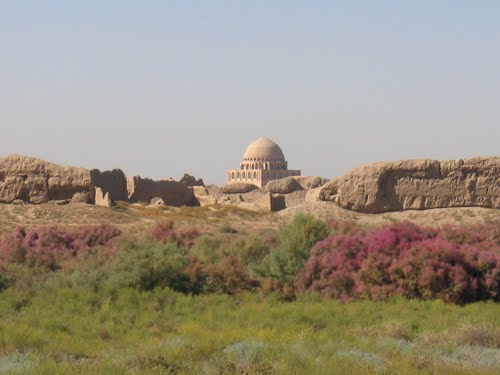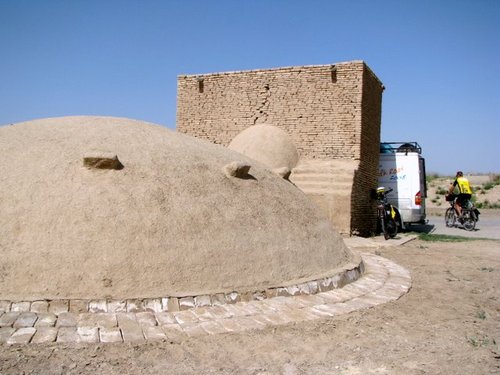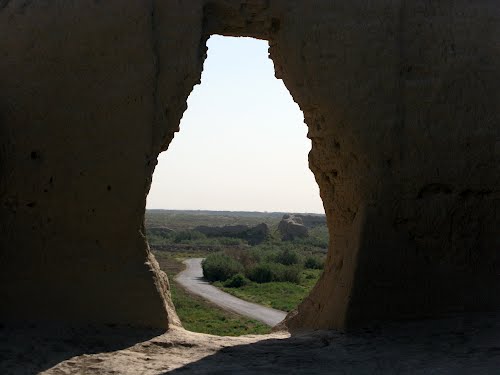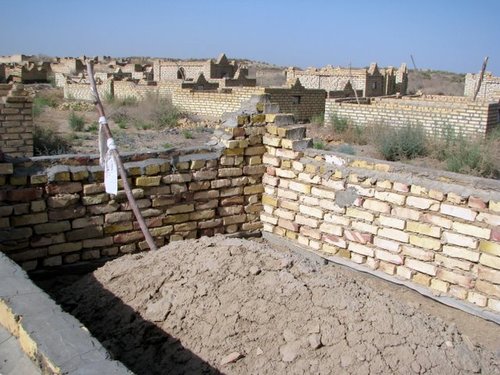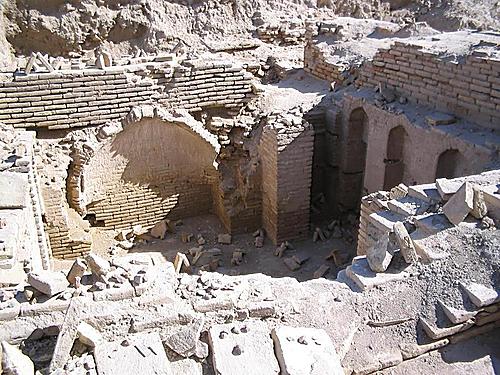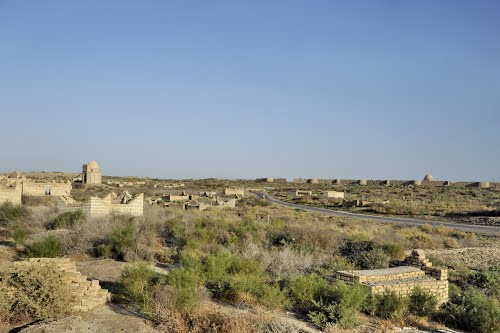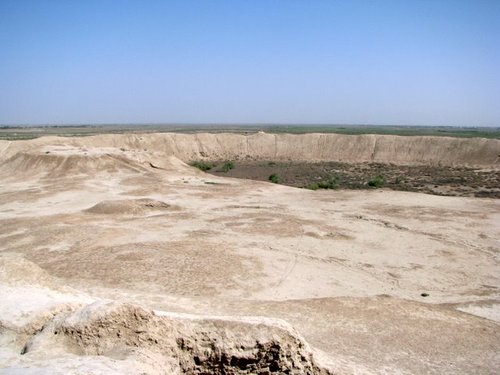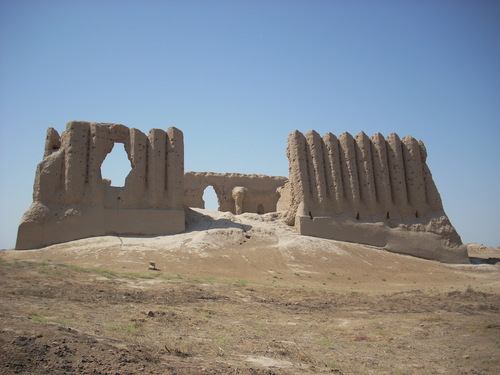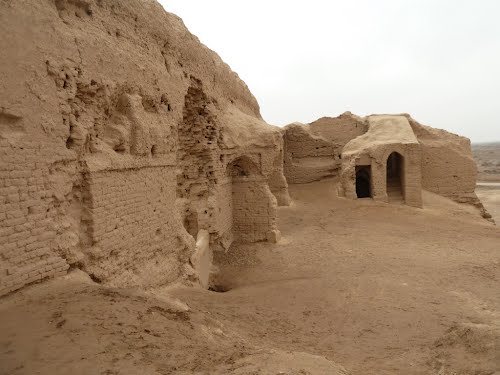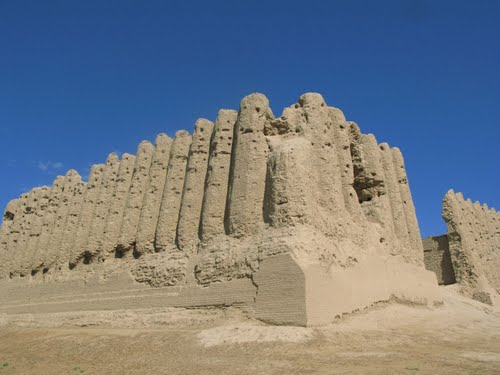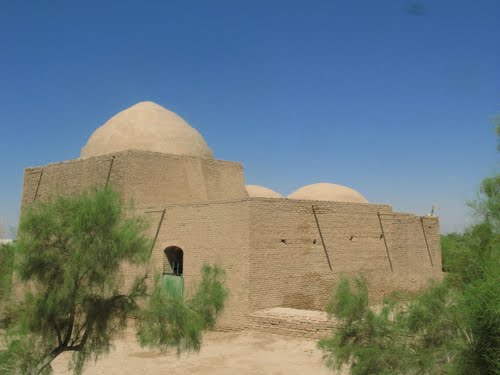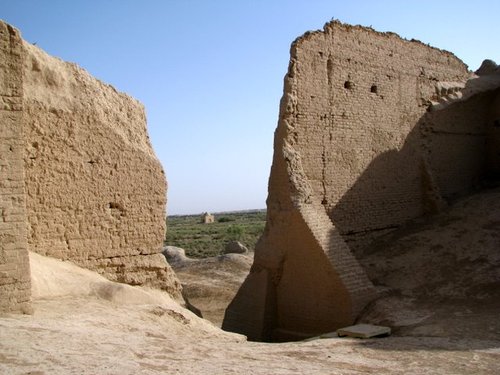Merv was a major oasis-city in Central Asia, on the historical Silk Road, located near today's Mary in Turkmenistan.
Several cities have existed on this site, which is significant for the interchange of culture and politics at a site of major strategic value. It is claimed that Merv was briefly the largest city in the world in the 12th century. The site of ancient Merv has been listed by UNESCO as a World Heritage Site.
History
Merv has prehistoric roots: archaeological surveys have revealed many traces of village life as far back as the 3rd millennium BC and have associated the area culturally with the Bactria-Margiana Archaeological Complex. The geography of the Zend-Avesta mentions Merv along with Balkh. In Zoroastrianism, the god Ahura Mazda created Mouru as one of sixteen perfect lands.
Under the Achaemenid Empire (c. 550–330 BC), the historical record mentions Merv as a place of some importance: under the name of Margu it occurs as part of one of the satrapies in the Behistun inscriptions (ca. 515 BC) of the Persian monarch Darius Hystaspis. The first city of Merv was founded in the 6th century BC as part of the Achaemenid expansion into the region of Cyrus the Great (559–530 BC), but later strata deeply cover the Achaemenid levels at the site.
Alexander the Great's visit to Merv is merely legendary, but the city was named Alexandria for a time. After Alexander's death in 323 BC, Merv became the capital of the Province of Margiana of the Seleucid, Bactrian (256-125 BC), Parthian, and Sassanid states. The Seleucid ruler Antiochus Soter (reigned 281–261 BC) renamed Merv as Antiochia Margiana; he rebuilt and expanded the city at the site presently known as Gyaur Gala. After the fall of the Seleucid dynasty (63 BC), Bactria, Parthia, and the Kushans took control in succession. Merv was a major city of Buddhist learning, with Buddhist monastery temples for many centuries until its Islamicization. At the site of Gyaur Kala and Bairam Ali Buddhism was followed and practised often at the Buddhist stupa.
After the Sassanid Ardashir I (220–240 AD) took Merv, the study of numismatics picks up the thread: the unbroken series of coins originally minted at Merv document a long unbroken direct Sassanian rule of almost four centuries. During this period Merv was home to practitioners of various religions beside the official Sassanid Zoroastrianism, including Buddhists, Manichaeans, and Christians of the Church of the East. Between the 6th (553) and 11th centuries AD, Merv served as the seat of an East Syrian metropolitan province. The Hephthalite occupation from the end of the 5th century to 565 a.d briefly interrupted Sassanid rule.

